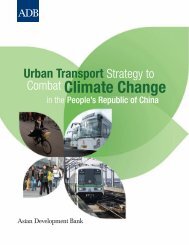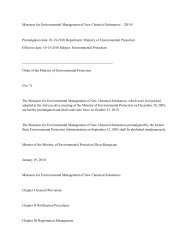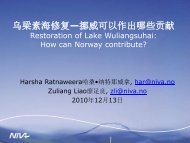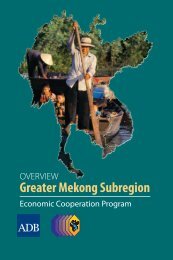View full report - NEEC
View full report - NEEC
View full report - NEEC
- No tags were found...
You also want an ePaper? Increase the reach of your titles
YUMPU automatically turns print PDFs into web optimized ePapers that Google loves.
Trading Across Borders: Importing and Exporting from ChinaThe benefits of trade are well documented—as are the obstacles to trade. Tariffs, quotas and distancefrom large markets greatly increase the cost of goods or prevent trading altogether. But with faster shipsand bigger planes, the world is shrinking. Global and regional agreements have brought down tradebarriers. Yet Africa’s share of global trade is smaller today than it was 25 years ago. So is the MiddleEast’s, excluding oil exports. The reason is simple: many entrepreneurs face numerous hurdles toexporting or importing goods. They often give up. Others never try.Doing Business compiles procedural requirements for trading a standard shipment of goods by oceantransport. Every official procedure—and the associated documents, time and cost—for importing andexporting the goods is recorded, starting with the contractual agreement between the two parties andending with delivery of the goods. For importing the goods, the procedures measured range from thevessel’s arrival at the port of entry to the shipment’s delivery at the factory warehouse. For exporting thegoods, the procedures measured range from the packing of the goods at the factory to their departurefrom the port of exit.To make the data comparable across countries, several assumptions about the business and the tradedgoods are used. The business is of medium size, with 100 or more employees, and is located in theperiurban area of the country’s most populous city. It is a private, limited liability company, domesticallyowned, formally registered and operating under commercial laws and regulations of the country. Thetraded goods are ordinary, legally manufactured products, and they travel in a dry-cargo, 20-foot FCL (<strong>full</strong>container load) container.Documents recorded include port filing documents, customs declaration and clearance documents, andofficial documents exchanged between the concerned parties. Time is recorded in calendar days, fromstart to finish of each procedure. Cost measures the fees levied on a 20-foot container in U.S. dollars. Allthe fees associated with completing the procedures to export or import the goods are included, such ascosts for documents, administrative fees for customs clearance and technical control, terminal handlingcharges and inland transport. The cost measure does not include tariffs or trade taxes.Countries that have efficient customs, good transport networks and fewer documentrequirements—making compliance with export and import procedures faster and cheaper—are morecompetitive globally. That leads to more exports—and exports are associated with faster growth andmore jobs. Conversely, a need to file many documents is associated with more corruption in customs.Faced with long delays and frequent demands for bribes, many traders avoid customs altogether.Instead, they smuggle goods across the border. That defeats the very purpose in having border control oftrade—to levy taxes and ensure high quality of goods.40











